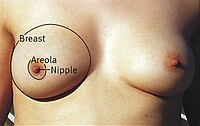
Photo from wikipedia
Abstract. A method using rough set feature selection and extreme learning machine (ELM) whose learning strategy and hidden node parameters are optimized by self-adaptive differential evolution (SaDE) algorithm for classification… Click to show full abstract
Abstract. A method using rough set feature selection and extreme learning machine (ELM) whose learning strategy and hidden node parameters are optimized by self-adaptive differential evolution (SaDE) algorithm for classification of breast masses is investigated. A pathologically proven database of 140 breast ultrasound images, including 80 benign and 60 malignant, is used for this study. A fast nonlocal means algorithm is applied for speckle noise removal, and multiresolution analysis of undecimated discrete wavelet transform is used for accurate segmentation of breast lesions. A total of 34 features, including 29 textural and five morphological, are applied to a k-fold cross-validation scheme, in which more relevant features are selected by quick-reduct algorithm, and the breast masses are discriminated into benign or malignant using SaDE-ELM classifier. The diagnosis accuracy of the system is assessed using parameters, such as accuracy (Ac), sensitivity (Se), specificity (Sp), positive predictive value (PPV), negative predictive value (NPV), Matthew’s correlation coefficient (MCC), and area (Az) under receiver operating characteristics curve. The performance of the proposed system is also compared with other classifiers, such as support vector machine and ELM. The results indicated that the proposed SaDE algorithm has superior performance with Ac=0.9714, Se=0.9667, Sp=0.975, PPV=0.9666, NPV=0.975, MCC=0.9417, and Az=0.9604 compared to other classifiers.
Journal Title: Journal of Medical Imaging
Year Published: 2017
Link to full text (if available)
Share on Social Media: Sign Up to like & get
recommendations!